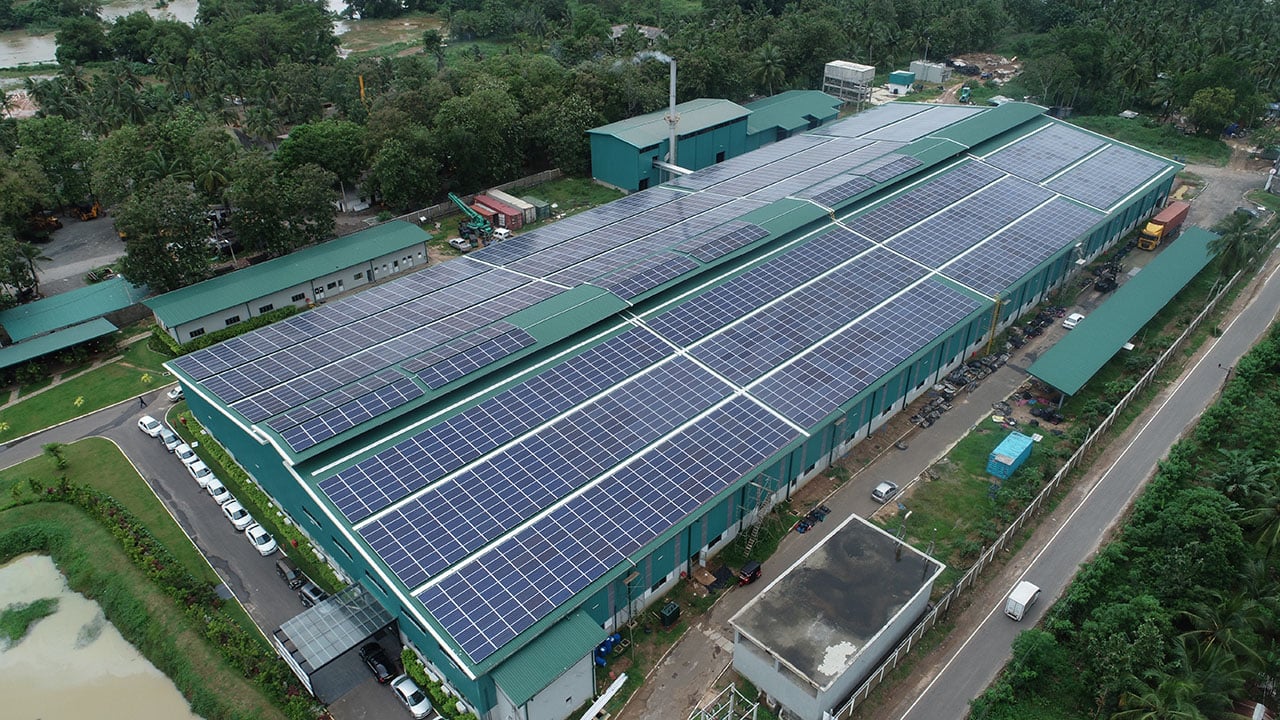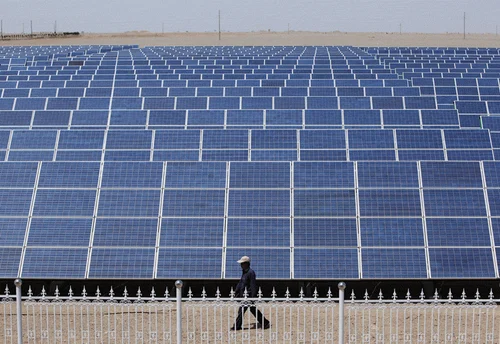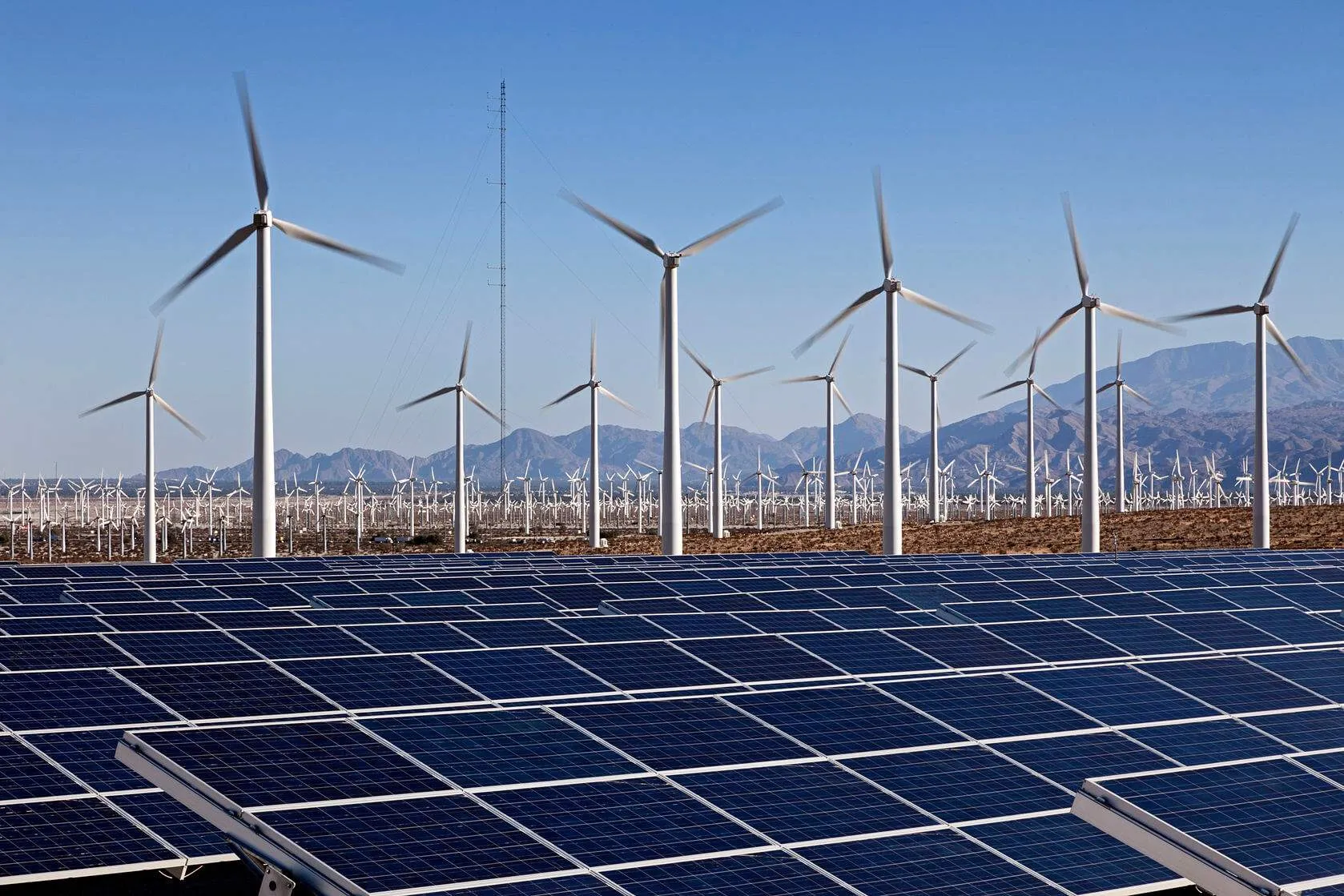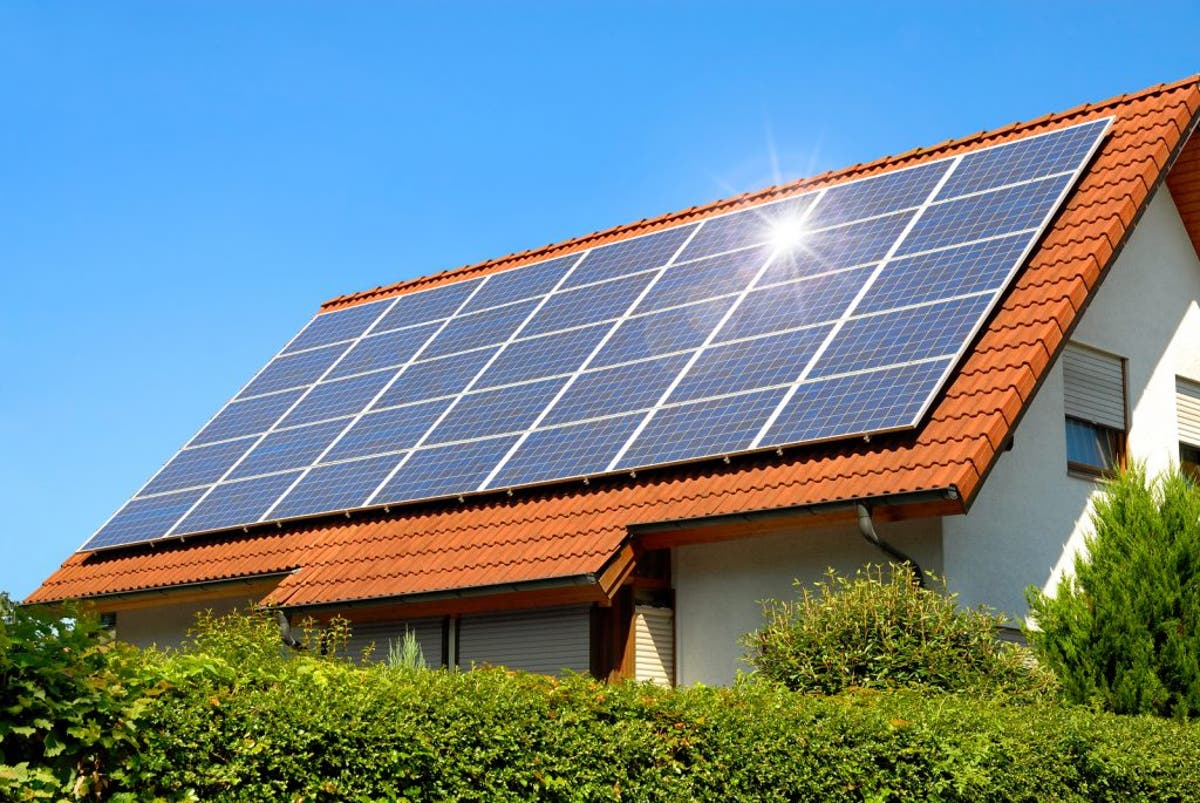1.Solar Rooftop Power Plant Installation
Unveiling the Essentials:
The
Importance of Components in Solar
Rooftop Power Plant Installation

Introduction:
As the world shifts towards cleaner and more sustainable energy sources, solar power has emerged as a beacon of hope for a greener future. Solar rooftop power Plant, in particular, have gained traction for their accessibility and effectiveness in harnessing solar energy. In this blog post, we'll delve into the significance of the key components involved in the installation of solar rooftop power Plant and how each plays a crucial role in ensuring optimal performance and efficiency.
The Heart of the System: Solar Panels
At the core of every solar rooftop power plant lies the solar panels themselves. These marvels of technology, equipped with photovoltaic cells, are responsible for converting sunlight into electricity. Their quality, efficiency, and durability are paramount in determining the overall performance and longevity of the system.
Securing the Foundation: Mounting Structures
While often overlooked, mounting structures are the unsung heroes of solar installations. These sturdy frameworks ensure that solar panels are securely anchored to the rooftop, optimizing their exposure to sunlight and minimizing the risk of damage from environmental factors such as wind and weather.
Converting Power: Inverters
Inverters serve as the bridge between solar panels and the electrical grid, converting the direct current (DC) electricity generated by the panels into alternating current (AC) electricity that can be used to power homes and businesses. The efficiency and reliability of inverters are critical in maximizing energy production and minimizing losses during conversion.
Monitoring Performance: Monitoring Systems
Last but not least, monitoring systems provide invaluable insights into the performance and health of the solar rooftop power plant. By tracking energy production, detecting issues or malfunctions, and optimizing system settings, monitoring systems empower users to make informed decisions and ensure the long-term viability of their solar investment.
The Importance of Quality and Reliability
In the world of solar energy, quality and reliability are non-negotiable. Investing in high- quality components ensures not only optimal performance but also peace of mind knowing that your solar rooftop power plant will continue to deliver clean, renewable energy for years to come.
Conclusion
As we navigate towards a more sustainable energy future, the importance of each component in solar rooftop power plant installation cannot be overstated. From solar panels to inverters to monitoring systems, every piece of the puzzle plays a vital role in unlocking the full potential of solar energy. By prioritizing quality, reliability, and efficiency, we can harness the power of the sun to create a brighter and cleaner world for generations to come.
2. On Grid Solar Power Plant
The Importance of Balance of System (BOS) in On-Grid Solar Power Plant

Introduction:
When discussing solar power, most people immediately think of solar panels. However, while panels are a crucial part of the system, the efficiency and success of an on-grid solar power plant hinge significantly on what’s known as the Balance of System (BOS). BOS encompasses all the additional components and infrastructure necessary to deliver usable electricity from the solar panels to the grid. This blog delves into the critical role of BOS in on-grid solar power Plant, highlighting its components, functions, and the overall impact on system performance.
Understanding the Balance of System (BOS)
The Balance of System refers to all components of a photovoltaic system excluding the solar panels themselves. These components typically include:
1. Inverters: Convert the direct current (DC) generated by the panels into alternating current
(AC) used by the electrical grid.
2. Mounting Structures: Secure the panels to rooftops or the ground.
3. Wiring and Electrical Components: Conduct electricity from the panels to the inverter
and from the inverter to the grid.
4. Monitoring Systems: Track the performance and efficiency of the solar power plant.
5. Safety Devices and Switchgear: Ensure safe operation and protect the system from
electrical faults.
The Role and Importance of BOS Components
1. Invertors
-
Efficiency and Performance:
Inverters are crucial for converting DC to AC with minimal loss. High-quality inverters ensure the maximum possible energy from the panels is converted and used. -
Grid Compatibility:
They synchronize the output with grid requirements, ensuring smooth integration and stable power supply. -
Advanced Features:
Modern inverters include features like maximum power point tracking (MPPT), which optimizes the power output from solar panels.
2. Mounting Structures:
-
Safety and Efficiency:
High-quality wiring and components minimize energy losses and prevent potential hazards, ensuring overall safety and efficiency. -
Durability:
These components need to withstand environmental stress and have a long lifespan to avoid frequent maintenance or replacement.
3. Wiring and Electrical Components:
-
Structural Integrity:
Proper mounting systems ensure panels are securely attached, can withstand environmental factors, and are positioned for optimal sunlight exposure. -
Durability:
High-quality mounting structures are designed to last for decades, reducing maintenance costs and ensuring long-term reliability.
4. Monitoring Systems:
-
Performance Tracking:
Monitoring systems help track the performance of the solar power plant in real-time, identifying issues quickly and optimizing maintenance schedules. -
Data Analysis:
They provide valuable data that can be analyzed to improve system efficiency and lifespan.
5. Safety Devices and Switchgear:
-
Protection:
Safety devices and switchgear protect against electrical faults, surges, and other issues, ensuring the system operates safely. -
Compilance:
They help ensure the system meets all local and international safety standards and regulations.
The Impact of BOS on On-Grid Solar Power Plant Efficiency
The efficiency and reliability of an on-grid solar power plant are significantly influenced by the quality and integration of its BOS components. Poorly designed or low-quality BOS components can lead to significant energy losses, frequent system failures, and higher maintenance costs. Conversely, high-quality BOS components can enhance system performance, reduce downtime, and extend the overall lifespan of the solar power plant.
Cost Considerations
While BOS components can represent a significant portion of the total cost of a solar power system, investing in high-quality BOS components is crucial for long-term savings. High-quality components reduce operational costs, enhance system reliability, and maximize energy output, leading to a better return on investment.
Conclusion
The Balance of System (BOS) is a critical component of any on-grid solar power plant. Ensuring that all BOS components are of high quality and properly integrated is essential for maximizing efficiency, ensuring reliability, and achieving the best possible financial returns. As the solar industry continues to grow, the importance of BOS will only become more pronounced, highlighting the need for ongoing innovation and investment in these essential system components. For anyone involved in solar power, understanding and prioritizing BOS is key to harnessing the full potential of solar energy.
3. Renewable Solar Energy
The Bright Future of Renewable Solar Energy

Introduction:
The future of energy is undeniably solar. As the world grapples with the dual challenges of climate change and dwindling fossil fuel reserves, renewable energy sources have emerged as the cornerstone of sustainable development. Among these, solar energy stands out due to its vast potential, technological advancements, and decreasing costs. Here, we explore the promising future of renewable solar energy and its pivotal role in transforming the global energy landscape.
1. Technological Innovations Driving Efficiency
Solar energy technology has made significant strides over the past few decades. Innovations in photovoltaic (PV) cells, which convert sunlight directly into electricity, have dramatically increased their efficiency. Advanced materials such as perovskites and organic PV cells promise even greater efficiencies and lower costs. Additionally, bifacial panels, which capture sunlight on both sides, and solar tracking systems, which follow the sun’s path, are maximizing energy capture and output.
2. Decreasing Costs and Increasing Accessibility
The cost of solar energy has plummeted, making it one of the most cost-competitive sources of energy. According to the International Renewable Energy Agency (IRENA), the cost of solar PV electricity has fallen by 82% since 2010. This trend is expected to continue as economies of scale, improved manufacturing processes, and technological advancements drive further cost reductions. As a result, solar energy is becoming more accessible to individuals, businesses, and governments around the world.
3. Integration with Energy Storage Systems
One of the challenges of solar energy is its intermittency – the sun doesn’t shine all the time. However, advancements in energy storage systems, particularly batteries, are addressing this issue. Lithium-ion batteries, for instance, have seen significant improvements in energy density, lifespan, and cost. Integrating solar energy systems with efficient storage solutions allows for the capture and use of solar power even when the sun is not shining, ensuring a reliable and consistent energy supply.
Monitoring Performance: Monitoring Systems
Last but not least, monitoring systems provide invaluable insights into the performance and health of the solar rooftop power plant. By tracking energy production, detecting issues or malfunctions, and optimizing system settings, monitoring systems empower users to make informed decisions and ensure the long-term viability of their solar investment.
4. Solar Energy in Emerging Markets
Emerging markets in Africa, Asia, and Latin America are poised to benefit immensely from solar energy. Many of these regions have abundant sunlight but lack access to reliable electricity. Solar energy offers a decentralized and scalable solution to this problem. Off-grid and mini-grid solar systems are providing electricity to remote and underserved communities, fostering economic development and improving quality of life. Governments and international organizations are increasingly supporting these initiatives through funding and policy measures.
4. Solar Energy in Emerging Markets
Emerging markets in Africa, Asia, and Latin America are poised to benefit immensely from solar energy. Many of these regions have abundant sunlight but lack access to reliable electricity. Solar energy offers a decentralized and scalable solution to this problem. Off-grid and mini-grid solar systems are providing electricity to remote and underserved communities, fostering economic development and improving quality of life. Governments and international organizations are increasingly supporting these initiatives through funding and policy measures.
5. Environmental and Economic Benefits
Solar energy’s environmental benefits are well-documented. It produces no greenhouse
gases during operation, significantly reducing the carbon footprint compared to fossil
fuels. Moreover, solar energy systems require minimal water for maintenance, making
them ideal for water-scarce regions.
Economically, the solar industry is a major job creator. According to the International
Energy Agency (IEA), the renewable energy sector, particularly solar, is expected to
create millions of jobs globally over the next decade. These jobs span manufacturing,
installation, maintenance, and research and development, contributing to economic
growth and stability.
6. Government Policies and Global Agreements
Government policies and international agreements are crucial drivers of the solar energy boom. Incentives such as tax credits, subsidies, and feed-in tariffs have encouraged the adoption of solar energy. International agreements like the Paris Agreement have also set ambitious targets for renewable energy adoption, prompting countries to invest heavily in solar infrastructure.
7. The Rise of Solar-Powered Transportation
The transportation sector is also witnessing a solar revolution. Solar-powered electric vehicles (EVs) and solar charging stations are gaining traction. Integrating solar panels into the surfaces of cars and buses can extend their range and reduce dependence on the grid. Additionally, solar energy is being used to power public transportation systems, further reducing urban emissions and promoting cleaner cities.
8. The Path Forward: Challenges and Opportunities
Despite its promising future, solar energy faces challenges. Issues such as grid integration, land use, and the need for substantial upfront investments must be addressed. However, these challenges also present opportunities for innovation and collaboration among stakeholders, including governments, private sector players, and research institutions.
Conclusion
The future of renewable solar energy is bright and full of potential. As technology advances, costs continue to fall, and global support for clean energy grows, solar power is set to play a pivotal role in the transition to a sustainable energy future. By harnessing the sun’s abundant energy, we can power our homes, businesses, and economies while protecting the planet for future generations. The solar revolution is here, and its impact will be transformative and far-reaching.
4. Solar Rooftoop Power Plant
Harnessing the Sun: A Guide to Solar Rooftop Power Plant

Introduction:
In recent years, the shift towards renewable energy has gained momentum worldwide,
with solar power emerging as a frontrunner in the race to combat climate change and
secure a sustainable energy future. One of the most accessible and effective ways to
tap into solar energy is through rooftop solar power Plant. In this blog post, we'll
explore the ins and outs of solar rooftop power Plant, their benefits, and how they are
transforming the way we generate and consume electricity.
Understanding Solar Rooftop Power Plant: Solar rooftop power Plant, also known as
photovoltaic (PV) rooftop systems, are installations of solar panels mounted on the
rooftops of residential, commercial, and industrial buildings. These systems harness
sunlight to generate electricity, providing a clean, renewable energy source right at the
point of consumption.
Key Components of Solar Rooftop Power Plant:
-
1. Solar Panels:
The heart of the system, solar panels consist of photovoltaic cells that convert sunlight into electricity.
-
2. Mounting Structures:
Securely hold the solar panels in place on the rooftop, optimizing their exposure to sunlight.
-
3. Inverters:
Convert the direct current (DC) electricity produced by the solar panels into alternating current (AC) electricity, which can be used to power appliances and devices.
-
4. Monitoring Systems:
Track energy production and system performance, allowing users to optimize efficiency and detect any issues or malfunctions.
Benefits of Solar Rooftop Power Plant:
-
1. Cost Savings:
By generating electricity on-site, solar rooftop power Plant can significantly reduce or eliminate electricity bills, providing long-term savings for homeowners and businesses.
-
2. Environmental Impact:
Solar energy is clean and renewable, producing no greenhouse gas emissions or air pollution, and helping to mitigate climate change.
-
3. Energy Independence:
Solar rooftop power Plant provide greater energy independence by reducing dependence on grid-supplied electricity and mitigating the impact of energy price fluctuations.
-
4. Property Value:
Installing a solar rooftop system can increase the value of a property, making it more attractive to potential buyers and providing a return on investment over time.
-
4. Government Incentives:
Many governments offer financial incentives, such as tax credits, rebates, and net metering programs, to encourage the adoption of solar energy, further enhancing the affordability and attractiveness of solar rooftop power Plant.
Conclusion
Solar rooftop power Plant represent a viable and sustainable solution to meet our energy needs while reducing carbon emissions and dependence on fossil fuels. With advancements in technology and declining costs, solar energy has become more accessible than ever before. By harnessing the power of the sun, we can create a brighter and cleaner future for generations to come.